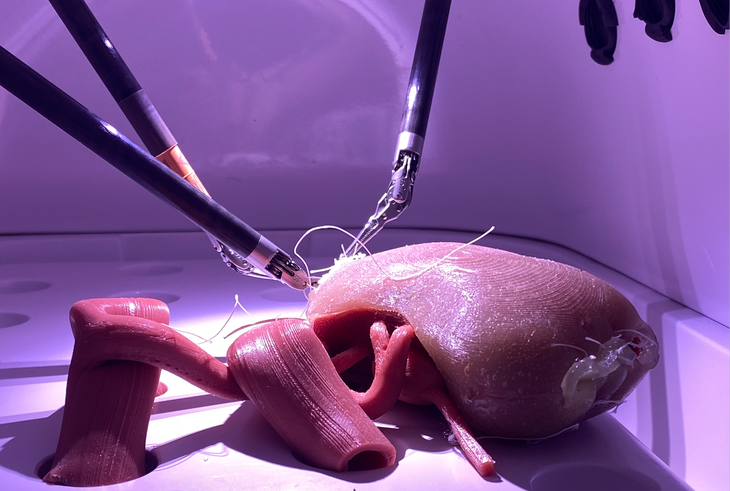
I first encountered the da Vinci surgical system in 2018. Standing before its sleek console and robotic arms, I snapped a photo and posted it with the caption "I met da Vinci trainer. I made a new dream." Little did I know how that moment would shape my future.
Six years later, when I sutured a grape with a surgical robot for the first time, my hands were shaking. Not the robot's hands - those were steady as stone - but my own hands on the controls, guiding titanium fingers smaller than pencil tips as they pierced the delicate fruit skin. One wrong move, too much pressure, and the grape would burst. Just like, I imagined, something far more precious could one day burst under my robotic touch.
The path to becoming a pediatric robotic surgeon is paved with thousands of these tiny moments, each more challenging than the last. I still remember my first attempt at dissecting a practice gel - how it kept tearing under my uncertain touch, each hole a stark reminder that real surgery allows no room for error. But that’s why I chose this path. As someone fascinated by technology’s potential to transform medicine, I was drawn to how robotic systems can translate my movements into actions with unprecedented precision. Each repetition at the console, eyes fixed on 3D displays while my fingers learn this new language of precision. Each repetition brings me closer to my goal: performing a precise surgery that leaves barely a whisper on a patient’s body, rather than the bold signature of traditional open surgery.
Now, as I prepare for my first robotic pyeloplasty - a delicate procedure to repair obstructed kidney drainage in a young patient - each milestone feels like summit after summit on an endless mountain. But that’s exactly what drew me to robotic surgery. In a field where millimeters can mean the difference between healing and harm, there’s no such thing as “good enough” - there’s only the constant pursuit of perfection.
Looking ahead, I see a future where these precise, robot-assisted movements will make complex pediatric surgeries safer and less traumatic. Every grape sutured, every simulator mastered, brings that future one step closer.